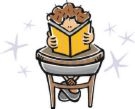
Almost twenty years after his death the inexplicable life and works of Salvador Dali are still a mystery. And con-men continue to make financial gains by using his name.
In Dali & I, Stan Lauryssens may well be continuing the tradition.
I wanted to quit reading this book about 30 pages in because it is so badly written. Unless you’re a fan of excessive lists in place of sentences:
“…far outsold superstars Warren Beatty, Raquel Welch, Ursula Andress, Dustin Hoffman, Woody Allen, and even Elizabeth Taylor, the all-time beauty queen.”
Mr Lauryssens uses this technique throughout the entire book, most excessively in the first half to describe his surroundings and what he’s eating and drinking.
Another annoyance. The continuing rolling “rrr’s” that he put into every dialogue attributed to Dali (a man whom, by the way, he never met. He saw him once at the top of a staircase) Just pointing out the rolling r’s once is all the reader needs to imagine for themselves.
And then there’s the bad dialogue. In the author’s defense, he does point out:
“Conversations presented in dialogue form have been recreated based on my memory of them, but they are not intended to represent the word-for-word documentation of what was said; rather, they are meant to reflect the substance of what was said.”
Fair enough. Who keeps a diary of every conversation they have. But, again, they are badly written and the timing of them is hard to believe. Why, upon first meeting someone, would you tell them of your childhood sexual abuse at the hands of a living icon?
Beyond his writing style, I was also finding the truthfulness of much of this book dubious.
Upon being arrested, why would you brag to the police about knowingly selling fake Dali’s and then be shocked when they put you in jail? If your keeping yourself prisoner in your own home because Interpol is looking for you, why would you contact the FBI to get a file on Dali to find out if he was a Nazi spy? If you’re comfortable driving your Alfa-Romeo from town to town to meet with Dali insiders (while still being hunted by Interpol) why not buy a pad of paper as opposed to writing conversations down on backs of receipts and toilet paper?
Yes, about halfway through the book Lauryssens began keeping notes on his conversations (whether for a memoir or some sort of evidence against Dali is not told) and the dialogue in the book started flowing more smoothly. So, just as I was getting ready to at least try to enjoy this book as a fictional memoir…Stan ticked me off…
His lack of respect for people as a whole was irritating me and I’m sure his “Black” housekeeper (mentioned twice in the same terms) would feel the same. After having mentioned Amanda Lear a couple of times and back-handedly complimenting her each time, he finally flat out insulted her by referring to her artwork as Dali imitations. I needed to see for myself. So I “googled” Amanda Lear. I did find her art on a fan website. Definitely Dali inspired but hardly what I would call “imitations”. On her own website there is no artwork, it’s dedicated to her music and television appearances and has a couple of articles, including a 2004 interview for Night magazine which was very interesting.
Then I went back to the book and an hour later came across this:
"What advice did he (Dali) give you, Ultra (Violet)?"
"Whatever you do, he said, do something that attracts attention. Be a murderer, set fire to a hotel, talk dirty. Whatever. But do something..."
I just read that! I went back to Ms Lear’s site and sure enough, four years ago from her, not even quoting Dali:
"Whatever you do, be a murderer, set fire to the hotel, say something that will really shock, talk dirty, whatever, do something that will attract attention."
Did Mr. Lauryssens mistakenly attribute this quote to the wrong source? Although, according to the book Ms Lear was at this meeting with him and Ultra Violet, among others. Was this something Dali "said to all the girls"? Did the reporter interviewing Amanda Lear mistakenly credit her with this quote? Did the author happen upon this interview?
This caused me an irrepressible need for more investigation. I found on a number of different websites and two different Dali biographies instances of easily accessible information that is also noted in this book. None as nearly word for word as the above, but enough for me to wonder how much of this book is memoir and how much is research. And how many of these conversations he actually had, even allowing for the inaccuracy of the dialogue.
To go any further would cause this review to become a dissertation on Salvador Dali and how much information about him is real and how much is his own hype. How much responsibility he holds for the Dali fakes and how much is the way art works. An area I have some background in as someone who once worked as an in-house artist for and architectural firm. Scandalous.
Only two other books have ever made me as emotional as this one. The emotion with the other two was deep sorrow.
This book provoked high energy anger. I have told everyone I can find about this book. I can’t stop thinking about it, no matter what I’m doing. I still am not giving up on my own Dali research and there’s still plenty to come with lawsuits that are still active and I now find myself needing to keep current on them.
Even bad art can evoke emotion.
Title: Dali & I
Author: Stan Lauryssens
Publisher: St Martins
ISBN: 978-0-312-37993-3




































